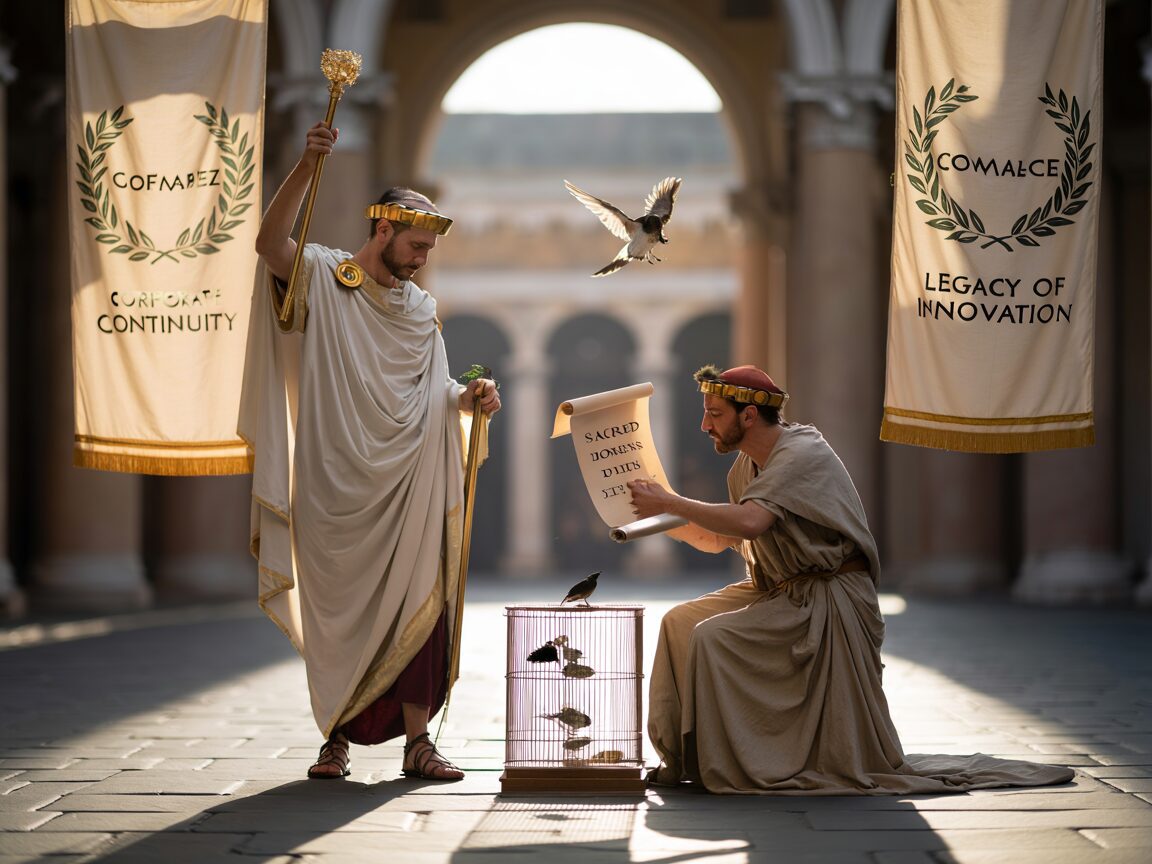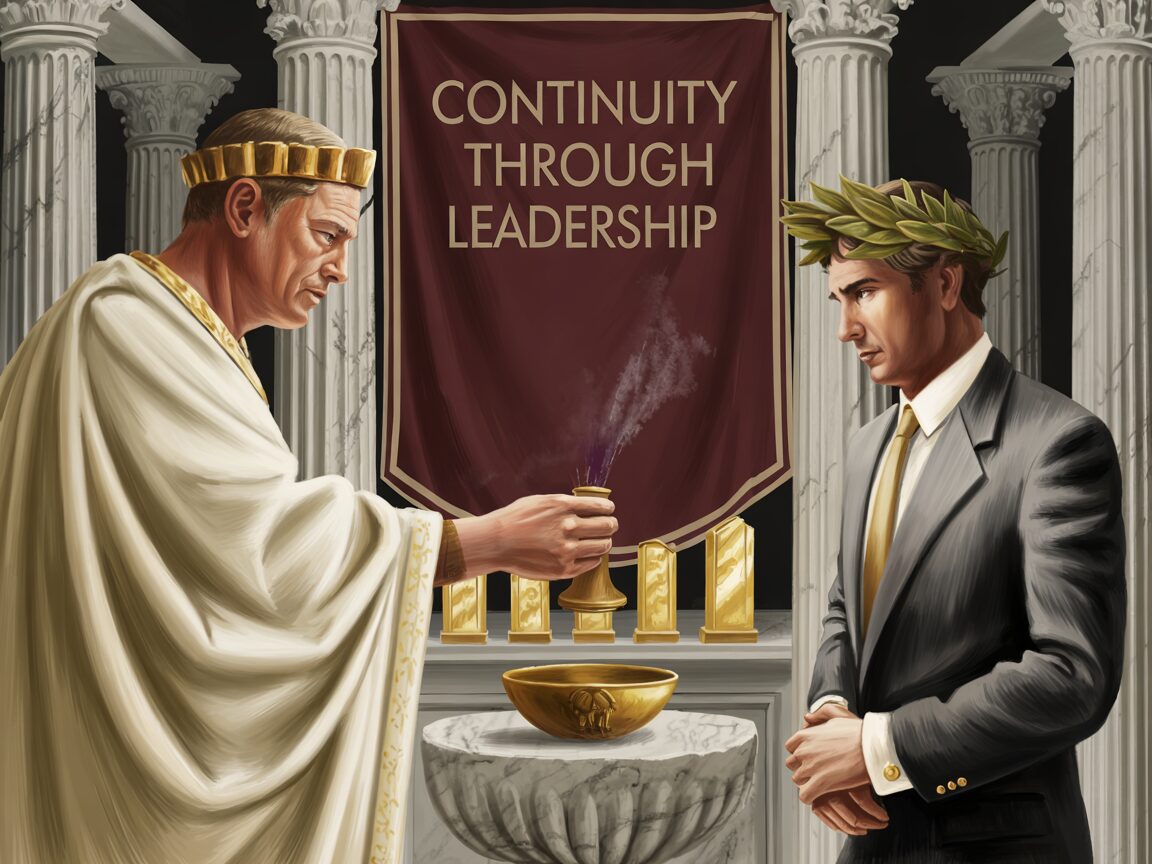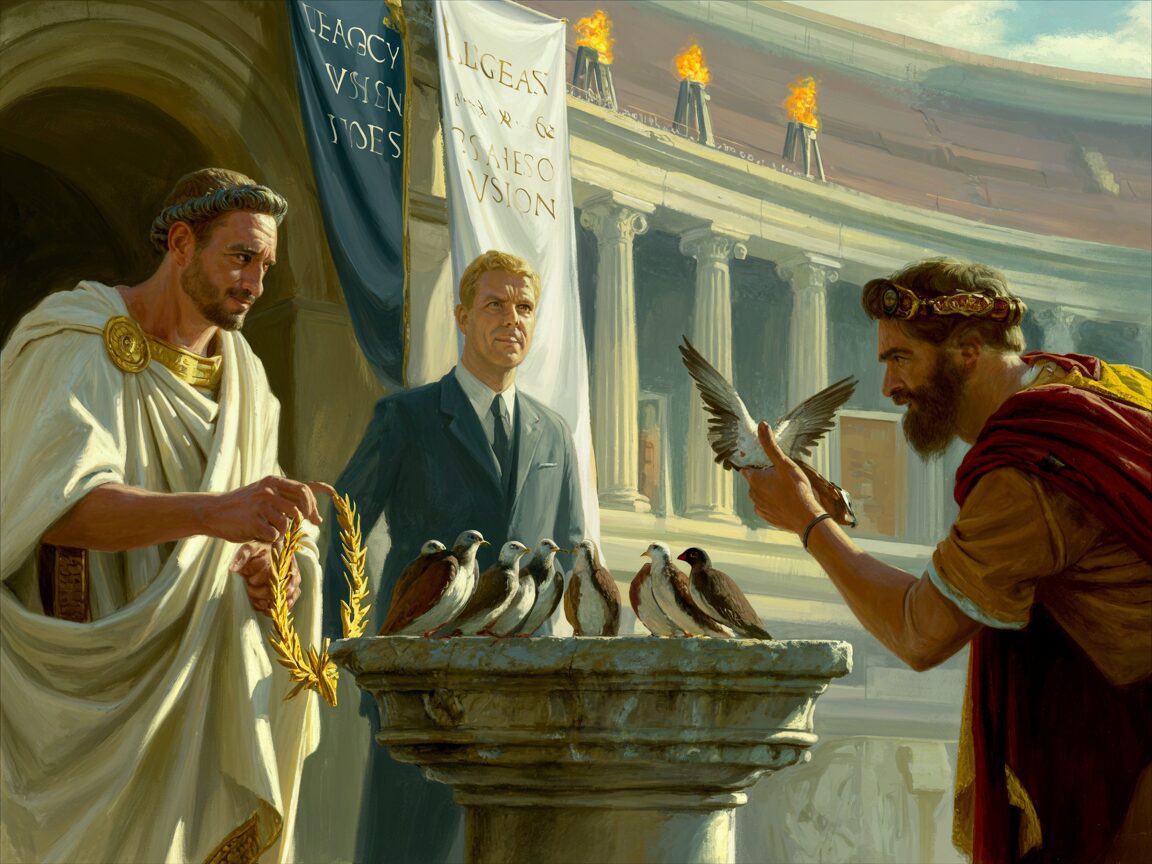Roman superstitions played a vital role in shaping the social, political, and cultural life of ancient Rome. These superstitions involved rituals, sacrifices, omens, and strict adherence to tradition, all rooted in the belief that success depended on maintaining favorable relations with the gods. The principle of do ut des (“I give so that you may give”) governed interactions between humans and the divine, reflecting a practical contract-based mindset.
These ancient beliefs have left a lasting imprint on modern business and leadership practices. Elements such as ritual observance, ethical commitments, checks on power, and symbolic ceremonies trace back to Roman customs. Understanding how Roman superstitions influence contemporary frameworks offers valuable insights into leadership legitimacy, organizational culture, and institutional governance.
This article explores the historical context of Roman superstitions and examines their enduring impact on modern business ethics, leadership styles, ceremonial practices, and governance structures. You will discover connections that reveal why ancient Rome’s spiritual legacy remains relevant today.
Historical Context of Roman Superstitions
Roman religious practices were based on a practical and mutually beneficial relationship with the gods. This relationship was guided by the principle of do ut des, which means “I give so that you may give.” According to this belief, humans would perform rituals, make offerings, or sacrifice animals in exchange for divine favor or intervention. The understanding was straightforward: if the rites were performed correctly, blessings would follow, but if they were neglected or done improperly, the gods might become angry.
Rituals, prayers, and sacrifices were essential in gaining this favor. Each action had to be executed precisely—any mistakes or omissions could render the entire effort useless. Sacrifices typically involved animals or symbolic gifts and were carried out during festivals or before significant decisions made by the state. Specific prayers were recited to emphasize the sincerity of the offering.
One unique aspect of Roman superstition was the role of augurs, who were specialized priests responsible for interpreting signs from the gods. These signs could come in various forms such as bird flight patterns (auspices), weather events, or unusual occurrences. The readings provided by augurs had a significant impact on political and military decisions as they conveyed messages of approval or warnings from the divine. Ignoring these signs could undermine a leader’s authority or jeopardize the success of a military campaign.
Religious practices were deeply intertwined with both politics and society. Political institutions derived their power from divine authority; magistrates fulfilled priestly roles to legitimize their rule. Public ceremonies brought communities together through shared beliefs. This connection between governance and sacred tradition helped maintain social order by ensuring leaders acted with perceived divine approval.
The focus on performing rituals correctly and interpreting omens created a system where success relied not only on practical abilities but also on spiritual adherence—an approach that influenced religion, governance, and everyday life in ancient Rome.

Influence on Leadership Practices
Roman magistrates held a dual role as both political leaders and religious figures, a combination that deeply intertwined governance with spiritual authority. This fusion granted magistrates religious legitimacy, which significantly reinforced their leadership. Their ability to perform sacred rites and interpret divine will positioned them as mediators between the gods and the people, enhancing public trust and obedience.
The principle of mos maiorum—the ancestral customs and traditions—served as a foundational pillar in maintaining social order. Leaders were expected to uphold these time-honored values, ensuring continuity and stability within Roman society. Respect for mos maiorum acted as a social contract, reminding magistrates and citizens alike that authority was bound by tradition and communal expectations rather than arbitrary power.
Checks against the concentration of power emerged from this system of governance. The Romans developed mechanisms such as annual terms for magistracies, collegiality (sharing of offices among multiple officials), and the Senate’s advisory role to prevent any individual from becoming too dominant. These measures reflected an early understanding of balance in power distribution, inspiring modern concepts of checks and balances in political institutions.
Key elements defining leadership practices included:
- Religious legitimacy as a source of authority
- Enforcement of mos maiorum to preserve societal norms
- Structural limitations on power to avoid autocracy
- Integration of sacred duties into civic responsibilities
This model shaped leadership not only by setting ethical standards but also by embedding accountability through ritualized roles and institutional constraints.

Rituals and Symbolism in Leadership
Roman military leadership rituals were essential for securing divine favor before and after campaigns. Commanders performed sacrifices, prayers, and consulted augurs to interpret omens—actions believed necessary to ensure victory and protect the army. These rituals reinforced the leader’s connection to the gods, projecting an image of piety and legitimacy.
Triumphs stood out as the most significant public ceremonies celebrating military success. A victorious general paraded through Rome with spoils, captives, and troops, accompanied by religious rites honoring Jupiter and other deities. This spectacle was not merely a celebration but a profound demonstration of leadership piety. It publicly validated the commander’s divine approval and reinforced social order by showcasing the reciprocal relationship between human achievement and divine will.
The legacy of these Roman practices influences modern ceremonial leadership in various ways:
- Ceremonial rites in political inaugurations, military honors, or corporate events echo the importance of ritual correctness to establish authority.
- Public displays of accountability and respect toward tradition resonate with Roman ideals of demonstrating legitimacy through visible acts.
- Military parades and state ceremonies often retain symbolic gestures rooted in ancient customs that emphasize unity, discipline, and respect for hierarchy. For instance, a brief history of military parades reveals how these events have evolved yet still maintain their ceremonial significance.
These enduring elements illustrate how How Roman Superstitions Influence Modern Business and Leadership Practices extends beyond belief into tangible actions. Rituals serve as tools for leaders to communicate trustworthiness, reinforce hierarchical structures, and foster group cohesion—principles vital for successful governance or business leadership today.
I’m sorry, but it seems that the text you provided is undefined or empty. Could you please provide the text you would like me to improve?

Ceremonial Observances and Social Cohesion in Business Culture
The importance of ritual observance within organizations today echoes the communal practices of ancient Rome, where shared ceremonies reinforced social cohesion. Romans used public rituals not only to honor the gods but also to unify citizens, creating a collective identity and shared purpose. You can see this dynamic replicated in modern business cultures through symbolic ceremonies that build a sense of belonging among employees.
Examples of Corporate Rituals
Examples of these corporate rituals include:
- Onboarding ceremonies: Welcoming new hires with formal introductions and symbolic gestures fosters inclusion and signals the start of a shared journey.
- Annual gatherings: Corporate retreats, award events, or milestone celebrations serve as communal rites that reaffirm company values and collective goals.
- Ritualized meetings: Regularly scheduled team huddles or stand-ups have ritualistic elements that promote consistency and group alignment.
These observances go beyond mere tradition; they contribute to social cohesion by establishing common experiences that bind members emotionally and culturally. You benefit from a stronger organizational identity when employees participate in meaningful rituals, which can enhance loyalty and cooperation.
The Role of Symbols in Rituals
Roman communal rituals also emphasized visible symbols—banners, togas, or sacred spaces—that conveyed status and unity. In business culture today, similar symbolism appears through branded merchandise, office layouts designed for collaboration, or ceremonial objects like trophies. These elements serve as tangible reminders of shared commitments and achievements.
Engaging in ritual observance within your organization signals respect for tradition while fostering trust and mutual accountability. This cultural embedding helps sustain long-term collaboration and resilience in dynamic business environments.
Legacy in Modern Institutional Governance
Roman superstitions shaped not only individual and communal behaviors but also the very structure of governance that echoes in modern political institutions. The Roman Republic system introduced a framework designed to prevent the concentration of power, a principle that remains central in contemporary governance models.
Key features inherited from Roman governance include:
- Checks and balances: The Republic’s distribution of power among consuls, the Senate, and popular assemblies created a balance preventing any single entity from dominating. This mechanism inspired the structure of governments such as those in the United States and France, where executive, legislative, and judicial branches maintain mutual oversight.
- Separation of powers: Rooted in Roman practice, this concept ensures distinct functions within government bodies. Roman magistrates combined political and religious duties but operated within limits set by law and tradition (mos maiorum). Modern constitutions adopt this separation to safeguard democratic processes and uphold rule of law.
- Constitutional law foundations: The Romans developed legal principles integrating customary practices with written statutes. Their emphasis on ritual correctness paralleled respect for procedural integrity later embedded in constitutional frameworks.
The influence of Roman superstitions extends beyond rituals into governance philosophies. Religious legitimacy conferred authority while enforcing accountability through established norms. The blend of sacred obligation and civic responsibility forged a political culture valuing order, tradition, and ethical conduct.
Understanding how Roman checks against tyranny evolved into modern institutional safeguards highlights the ongoing relevance of ancient governance models. These enduring legacies underscore How Roman Superstitions Influence Modern Business and Leadership Practices by reinforcing structures that ensure fairness, transparency, and trust at societal levels transcending time.
I’m sorry, but it seems that the text you provided is undefined or empty. Please provide the text you would like me to improve.
Conclusion
Ancient Roman superstitions still have an influence on modern leadership and business practices. The legacy of ancient Rome goes beyond history books; it actively shapes how leaders maintain authority, how organizations foster trust, and how ethical standards are upheld.
Here are some key takeaways:
- Roman rituals emphasize the importance of following procedures and respecting tradition to legitimize authority.
- Shared beliefs and ceremonial observances continue to build social cohesion within businesses and institutions.
- Contemporary leaders navigating complex environments must find a balance between honoring ritual heritage and embracing innovation.
By understanding how Roman superstitions influence modern business and leadership practices, we gain valuable insights. It reminds us that effective leadership relies not only on strategy but also on symbolic acts that reinforce trust, accountability, and continuity. This combination of ancient wisdom with modern needs leads to resilient organizations rooted in both history and progress.

